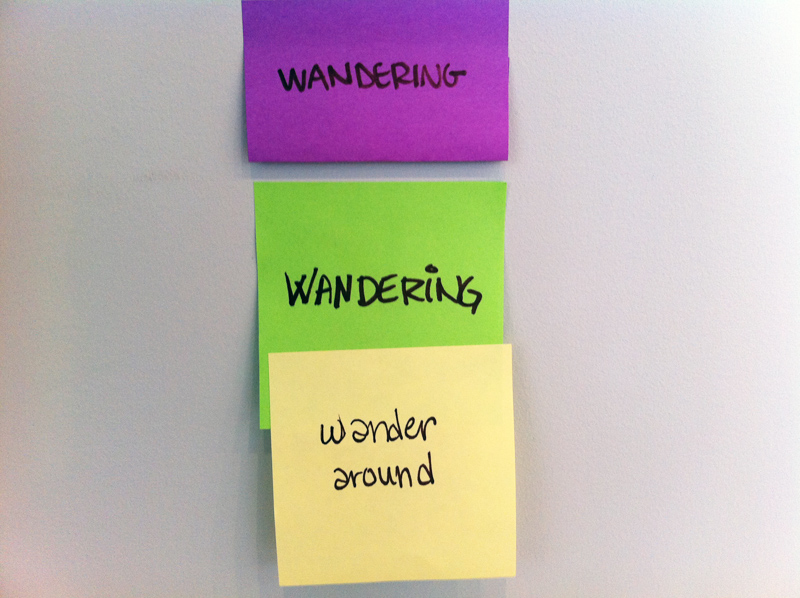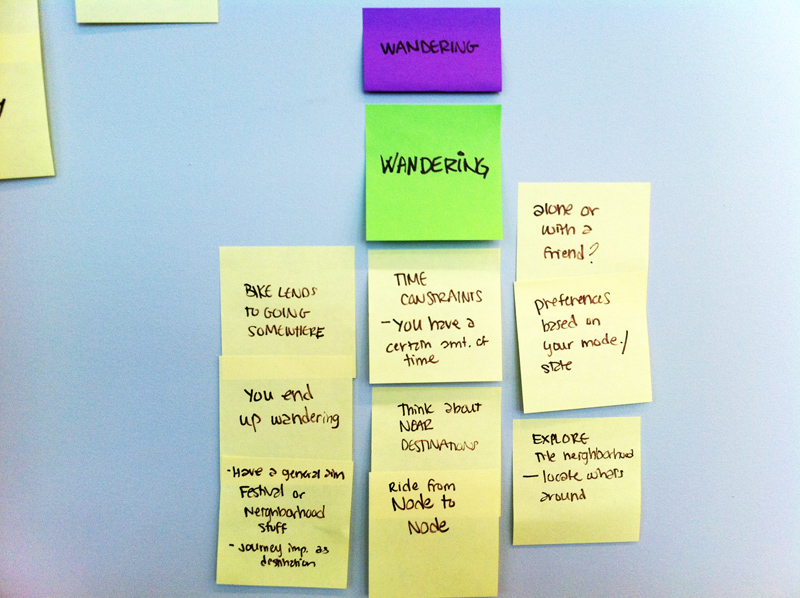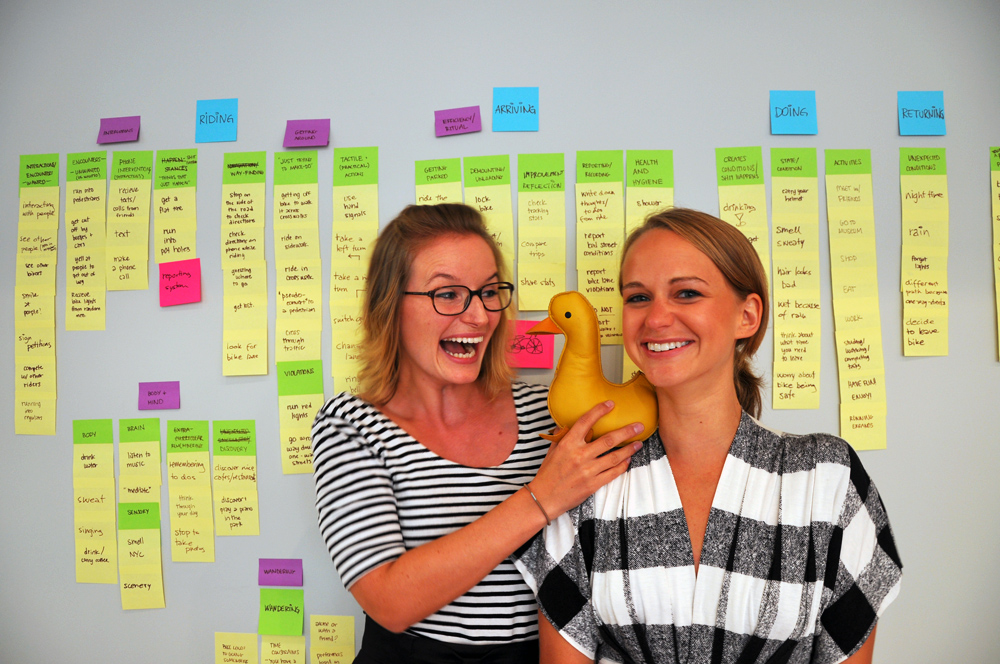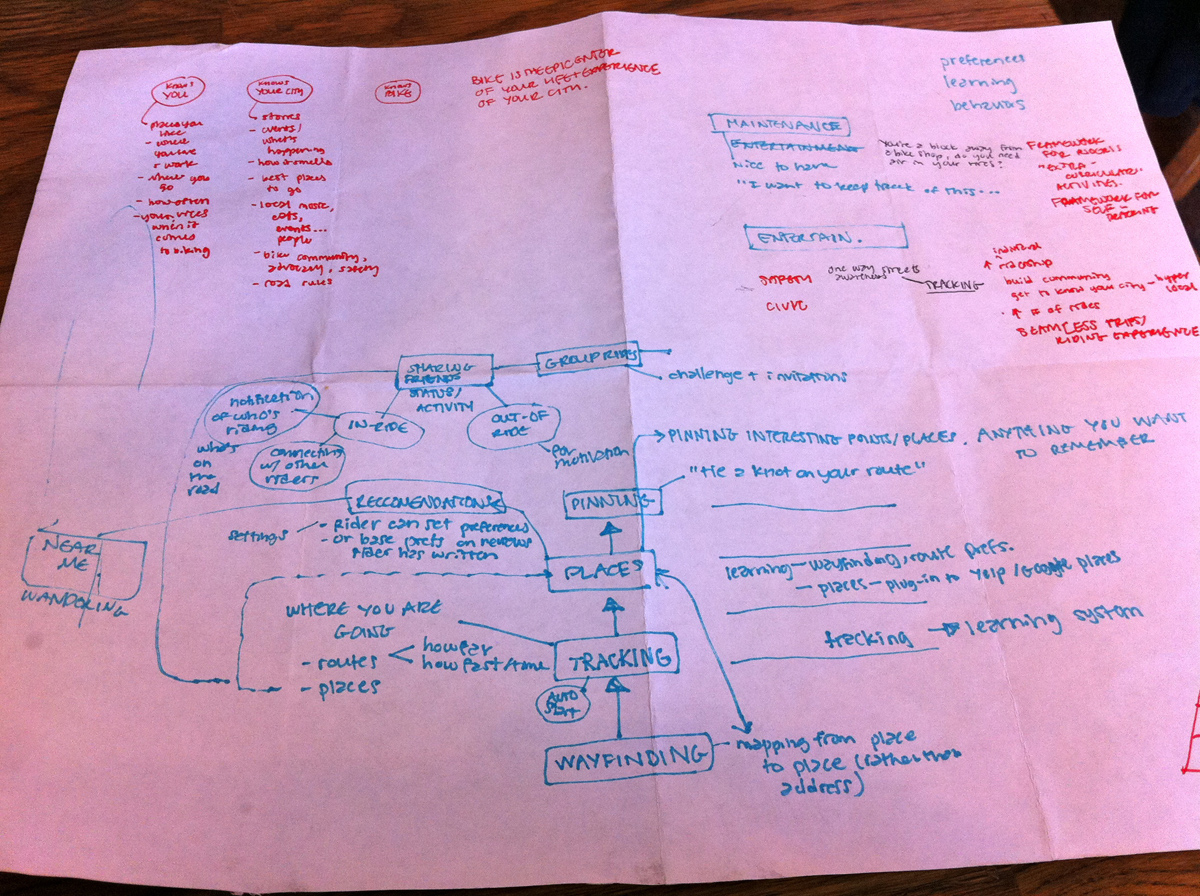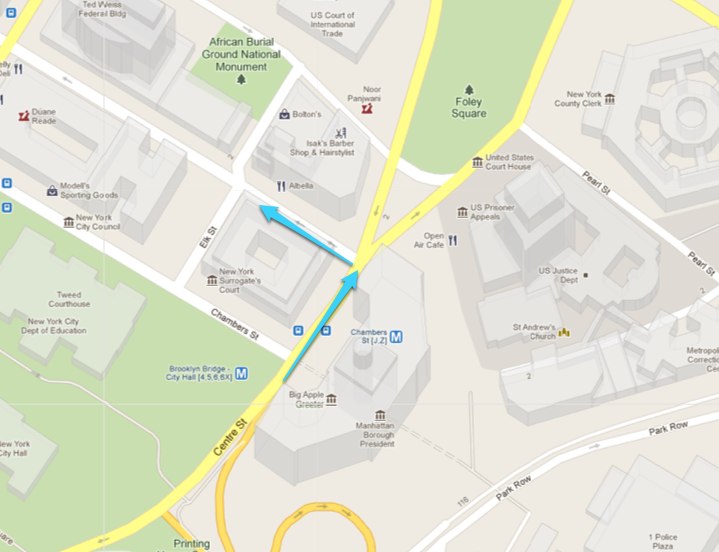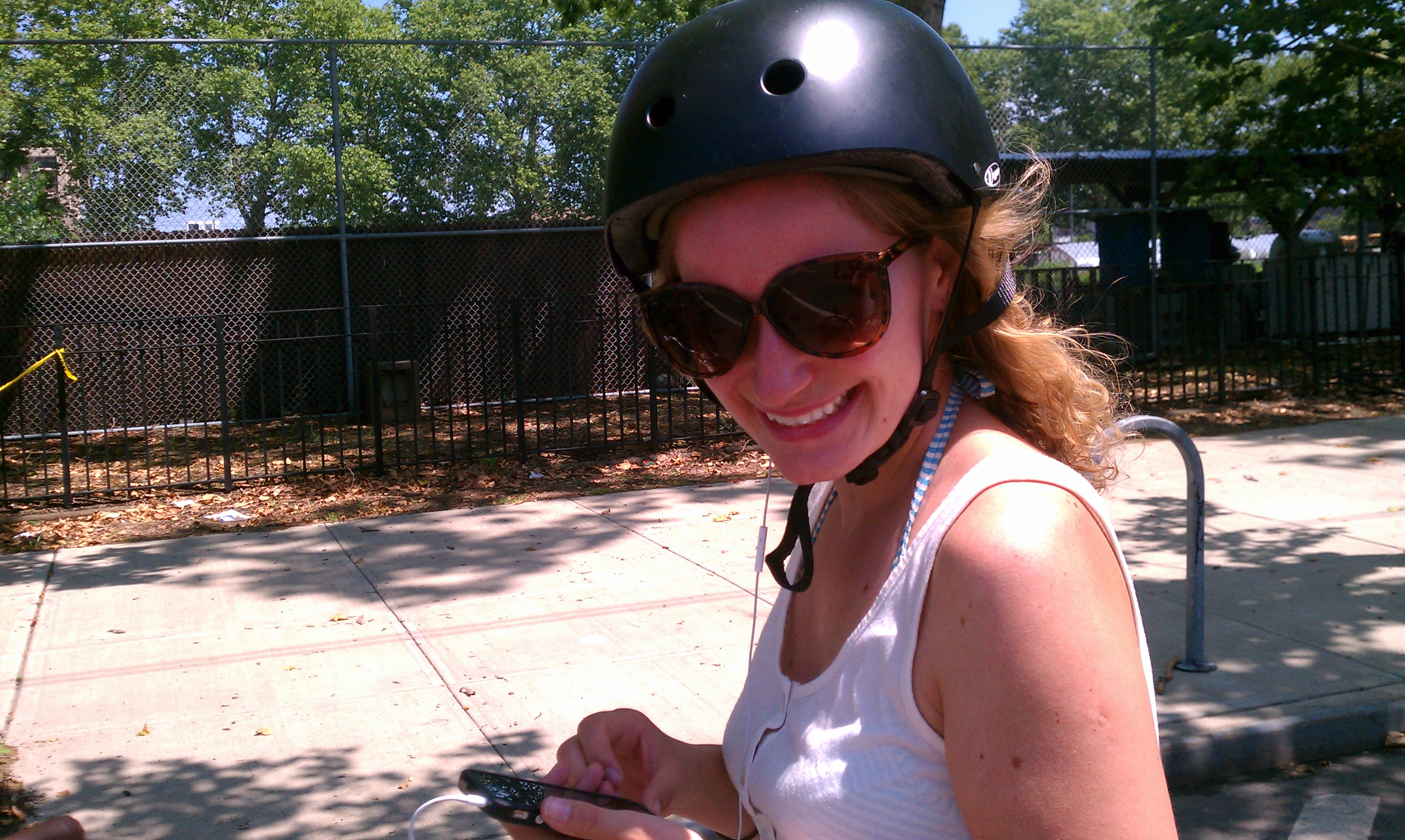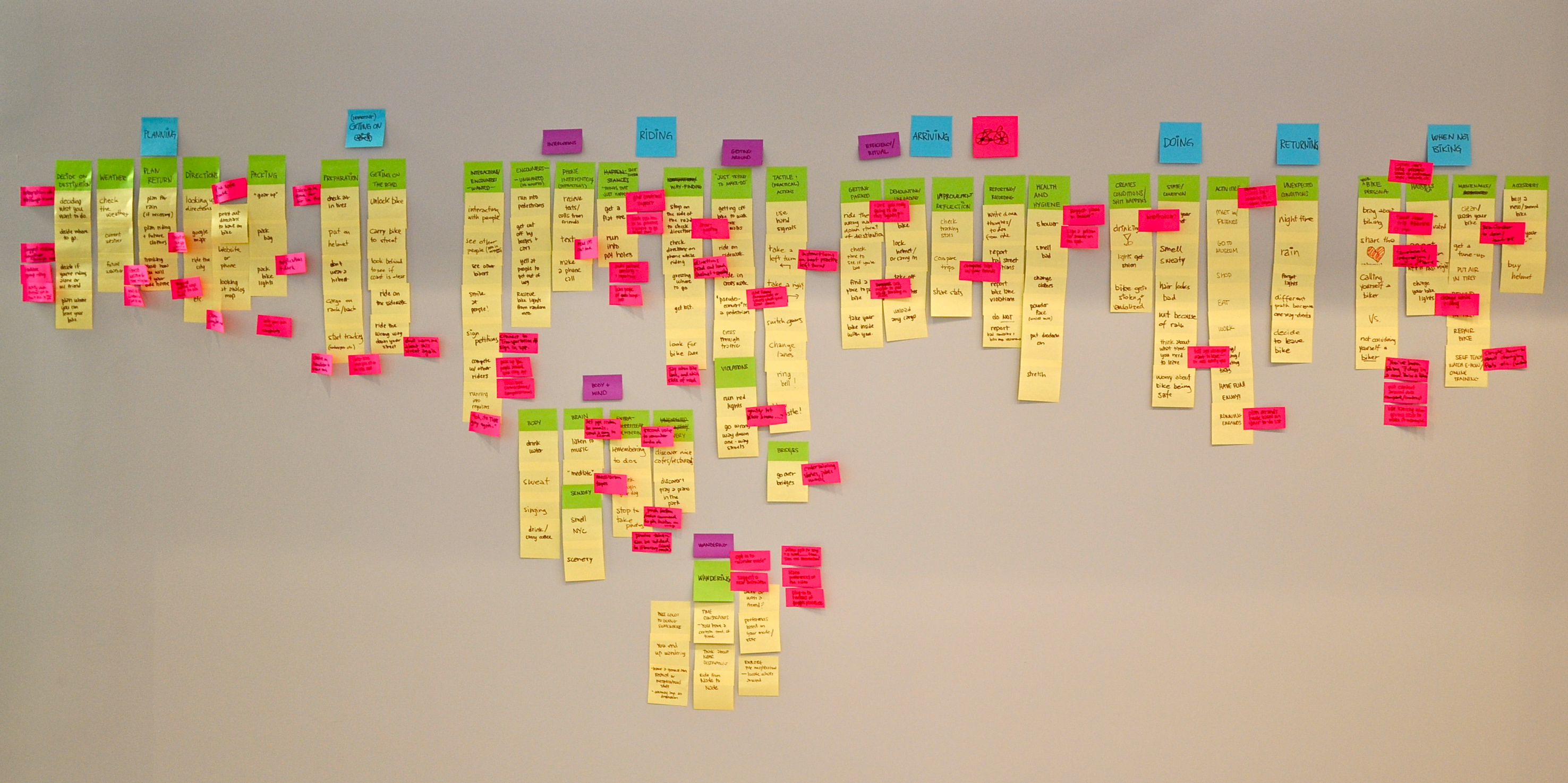
[—] PLANNING
[—] Decide on destination
Deciding what to do
Decide where to go
Decide if riding alone or with friend
Plan where you can leave your bike
[—] Opportunities
Integration with Yelp/Google Places
Suggest riding together through app
Facilitate group riding
Notify when your friends get on their bike to meet you
Play local music from bands performing this week
[—] Weather
Check the weather
Current weather
Future weather
[—] Opportunities
Forecast the weather for when your riding home
Group poll on whether it will rain or not
[—] Plan return
Plan for rain
Plan riding + future clothes
Thinking about how you will get your bike home
[—] Opportunities
Suggest best rain gear
Provide opportunity to buy from app
Suggest creative ways to get the bike home if it rains
[—] Directions
Looking up directions
Google maps
Ride the city
Etc
Print out directions to have on bike
Look at analog map
Website or phone
[—] Opportunities
Find safe route
Change suggested route
Write your own route (waypoints)
[—] Packing
Gear up
Pack bag
Pack bike lights
[—] Opportunities
Notifications if dark
[—] DEPARTING
[—] Preparation
Check air in tires
Put on helmet
Don’t wear a helmet
Put your helmet on your bag
Cargo on rack
Start tracking
[—] Opportunities
Calculate time for air in tires
Autotrack when you sit on the bike seat
Autotrack by using sensor in helmet
Device on handlebar to start tracking
[—] Getting on the road
Unlock bike
Carry bike to street
Look behind to see if coast is clear
Ride on sidewalk
Ride the wrong way down your street
[—] Opportunities
Say “Don’t warn me about this street again”
[—] RIDING
[—] INTERRUPTIONS
[—] Interactions/encounters wanted
Interacting with people
Talking with people on the sidewalk
See other people in the neighborhood
See other bikers
Smile at people
Sign petitions
Compete with other riders
Run into regulars
[—] Opportunities
Connect to Transportation Alternatives (Sign petitions in app)
Pick up the people around you using the app
Facilitate conversation/competitiveness
“Oh, it’s that guy again!”
[—] Interactions/encounters unwanted
Run into pedestrians
Get cut off buy buses/cars
Yell at people to get out of the way
Receive bike lights from random men
[—] Opportunities
Report stories and funny encounters
[—] Phone interventions/distractions
Receive text/calls from friends
Make a phone call
Text
[—] Opportunities
Read SMS out loud
Make a phone call (mic in helmet)
[—] Shit happens
Get a flat tire
Run into potholes
[—] Opportunities
Give emotional support
Teach people how to fix tire (video/text manual)
Where to get tire fixed
Auto pothole sensing and reporting
[—] GETTING AROUND
[—] Way-finding
Stop on the side of the road to check directions
Check directions while riding
Guessing where to go
Get lost
Look for bike lane
[—] Opportunities
Directions read out loud (helmet + speaker)
Say when bike lane, and which side of the road it’s on
[—] Violations/Just trying to make do
Getting off the bike to walk it across crosswalks
Ride on sidewalk
Ride on crosswalk
Pseudo-convert to a pedestrian
Cross through traffic
Run red lights
Go wrong way down one-way streets
[—] OpportunitiesGive funny commentary or stories when you slow down
Gently let biker know about the violation…?
Safety nudge: “Hey, did you know you’re not supposed to do that?”
[—] Tactile/practical actions
Use hand signals
Take a left turn
Take a right turn
Switch gears
Change lanes
Ring bell
Blow whistle
[—] Opportunities
Instructions on best-practice
Ooops, illegal to take right turn on red in NY
[—] Bridges
Go over bridges
[—] Opportunities
Give funny commentary, stories, music when you slow down
Nudge person to thank safety guys on the bridge
[—] BODY+MIND
[—] Body
Drink water
Sweat
Sing
Drink / carry coffee
[—] Brain
Listen to music
Meditate
[—] Opportunities
Let people listen to music
Send a song to a friend
Meditation tapes
[—] Sensory
Smell NYC
Scenery
[—] Opportunities
Commentary on scenery
[—] Remembering
Remebering to-dos
Think through your day
Stop to take photos
[—] Opportunities
Record voice to remember to-dos etc
Push button/voice command to pin locations to map
Photos taken can be added to itinerary (visual route)
[—] WANDERING
[—] Wandering
Bike lends to going somewhere
You end up wandering
Have a general aim (festival/hood/concert/museum)
Journey as important as destination
Time constraints/window
Think about near destinations
Ride from node to node
Along or with a friend
Preferences based on your mode or state of being
Explore the neighborhood/locate what’s around
[—] Opportunities
Opt in to “wander mode”
Suggest a near destination
Allow people to say “I have _____ time, take me somewhere”
Learn preferences of the rider
Plug into reviews of Google Places etc
[—] ARRIVING
[—] EFFICIENCY/RITUAL
[—] Getting parked
Ride the wrong way down the street of destination
Check time to see if you’re late
Find a place to park bike
Take your bike inside with you
[—] Opportunities
“Are you really going to do this again?”
Ask mayor to put bike parking in certain places
[—] Demounting/Unloading
Lock bike
Lock helmet/Carry helmet in
Take off helmet and bike lights
Unload any cargo
[—] Improvement/Reflection
Check tracking stats
Compare trips
Share stats
[—] Opportunities
Compare trips with your friends
[—] Reporting/recording
Write down thoughts/to-dos from ride
Report bad street conditions
Report bike lane violations
Do not report
[—] Opportunities
Facilitate reporting
Offering incentives for reporting
[—] Health and hygiene
Shower
Smell bad
Change clothes
Powder face
Put deodorant on
Stretch
[—] Opportunities
Suggest places to shower
Sign a petition for showers on the spot
Support a cultural shift of smelling bad
[—] DOING
[—] Creates conditions/shit happens
Drinking
Lights get stolen
Bike get stolen/vandalized
[—] Opportunities
Breathalizer
[—] States/Conditions
Carry your helmet
Smell sweaty
Hair looks bad
Wet because of rain
Think about when you need to leave
Worry about bike being safe
[—] Opportunities
Tell app when you need to leave – it will notify you
Baby monitor bike
[—] Activities
Meet with friends
Go to museum
Shop
Eat
Work
Study
Complete tasks
Run errands
[—] Opportunities
Favorite places log
Checking in (integrate with foursqaure?)
Plan errands route based on your to-do list
RETURNING
[—] Unexpected conditions
Night time
Rain
Forgot lights
Different path home because one-way streets
Decide to leave bike
[—] Opportunities
Reminder of where you left bike
[—] WHEN NOT BIKING
[—] Your bike persona
Brag about biking
Share the love, Advocate biking
Call yourself a biker
vs. Not considering yourself a biker
[—] Opportunities
Rewards for doing a certain amount of rides, give honorary titles
You have biked for 7 days in a row! You are a biker!
capture rider biking persona based on preferences, style, behavior, etc.
Tweet about you trips to #BikeNYC, target stories to specific people
Facebook integration and sharing (FB timeline)
Put context around data (compare and contrast)
Use variety when giving stats, make it meaningful
[—] Hassles
Trying to be motivated
Go get bike from where you left it the previous night
Charge your bike lights, replace batteries or light itself
[—] Opportunities
Charge lights or helmet while riding
[—] Maintenance
Clean your bike
Get a tune-up
Put air in tires
Remind friends to put air in tires
Repair bike
Self-teach, watch e-how, online training
[—] Opportunities
Simple how-to about changing flats
Reminder to clean or get tune-up
[—] Accessories
Buy a new or second bike
Pimp your bike
Buy a helmet
Flagged areas, Areas we feel there is more to be explored
Going over bridges (site specific encouragement and commentary)
Wandering
Bike sharing
Motivation and data
Learning rider preferences, Pinning places on the map
Communicating with and riding with friends
